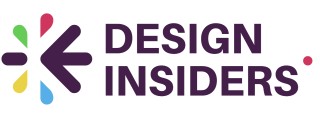
Understanding the basics of video and motion design
Grasping the Essentials of Video and Motion Design
Video and motion design have become pivotal in the landscape of marketing and visual communication. At its core, motion design involves the use of animation and visual effects to create engaging content that captures attention and conveys messages effectively. Understanding the basics of this dynamic field is crucial for anyone looking to leverage its potential in marketing strategies.
Motion design combines graphic design principles with animation techniques to create moving visuals. This blend of art and technology allows designers to bring static images to life, making them more engaging and memorable. The process often involves the use of software tools such as Adobe After Effects, Cinema 4D, and Blender, which enable designers to manipulate graphics and create intricate animations.
Video design, on the other hand, focuses on the creation of video content that can range from short clips to full-length productions. It involves a comprehensive understanding of storytelling, cinematography, and editing. The integration of motion design into video content can significantly enhance its impact, making it more appealing and effective in conveying messages.
For those interested in diving deeper into the fundamentals and exploring the broader impact of these design elements, this resource provides valuable insights.
The role of video and motion design in modern marketing
The Evolution of Marketing Through Motion
In today's fast-paced digital landscape, the role of video and motion design in marketing has become indispensable. The integration of dynamic visuals into marketing strategies has revolutionized how brands communicate with their audiences. This shift is largely due to the increased consumption of digital content and the demand for more engaging and interactive media.
Engagement and Storytelling
Motion design offers a unique way to tell stories that resonate with audiences. By combining elements of animation, video, and sound, brands can craft narratives that capture attention and evoke emotions. This form of storytelling is particularly effective in conveying complex messages in a simplified and visually appealing manner. For more insights on advanced strategies in video marketing, explore advanced strategies for captivating your audience.
Enhancing Brand Identity
Video and motion design play a crucial role in reinforcing brand identity. Through consistent use of colors, typography, and animation styles, brands can create a cohesive visual language that strengthens their presence in the market. This not only aids in brand recognition but also builds trust and loyalty among consumers.
Boosting Conversion Rates
One of the most significant impacts of video and motion design in marketing is its ability to boost conversion rates. Dynamic content is more likely to be shared and engaged with, leading to increased visibility and potential customer conversions. By strategically placing video content within marketing funnels, brands can guide users through the buyer's journey more effectively.
As you delve deeper into the techniques and tools for creating compelling motion graphics, you'll uncover how these elements can be harnessed to create impactful marketing campaigns. Stay tuned for insights into successful campaigns and the challenges faced in this dynamic field.
Techniques and tools for creating compelling motion graphics
Crafting Engaging Motion Graphics
Creating compelling motion graphics is both an art and a science. It involves a deep understanding of visual storytelling and the technical skills to bring those stories to life. As we delve into the techniques and tools used in this dynamic field, it's crucial to recognize the blend of creativity and technology that drives successful outcomes.
Essential Techniques
- Storyboarding: This is the foundational step where the narrative is mapped out. Storyboarding allows designers to visualize the sequence of events and ensure the message is coherent and engaging.
- Animation Principles: Techniques such as timing, spacing, and easing are vital to creating smooth and natural motion. Understanding these principles can significantly enhance the quality of the motion design.
- Typography in Motion: The art of kinetic typography can transform text into a powerful visual element. By animating type, designers can emphasize key messages and maintain viewer interest.
Tools of the Trade
There are several tools available that cater to different aspects of video and motion design. Here's a look at some popular ones:
- Adobe After Effects: A staple in the industry, this software offers a comprehensive suite of tools for creating intricate animations and visual effects.
- Blender: Known for its 3D capabilities, Blender is a versatile tool that can be used for both simple animations and complex motion graphics.
- Cinema 4D: This tool is particularly favored for its user-friendly interface and powerful rendering capabilities, making it ideal for high-quality motion graphics.
Integrating Personas for Effective Design
Understanding your audience is crucial when designing motion graphics. By integrating personas, designers can tailor their content to resonate with specific demographics, ensuring the message is both impactful and relevant.
Incorporating these techniques and tools effectively can elevate the quality of motion graphics, enhancing their role in marketing and visual communication. As discussed earlier, the strategic use of video and motion design can significantly boost engagement and convey complex messages with clarity.
Case studies: Successful video and motion design campaigns
Real-world Success Stories in Video and Motion Design
In the fast-paced world of marketing, video and motion design have emerged as powerful tools for engagement and storytelling. Let's explore some standout campaigns that have effectively harnessed these techniques.- Brand Awareness through Storytelling: A global sportswear brand launched a campaign that combined motion graphics with a compelling narrative. The campaign focused on athletes' personal stories, using dynamic visuals to highlight their journeys. This approach not only increased brand visibility but also resonated emotionally with the audience, driving higher engagement rates.
- Interactive Product Launches: A leading tech company used motion design to unveil its latest smartphone. By integrating interactive elements and sleek animations, the campaign allowed viewers to explore the product's features in an engaging way. This strategy resulted in a significant boost in pre-orders and online buzz.
- Educational Content with Motion Graphics: An educational platform utilized motion graphics to simplify complex topics. By breaking down information into visually appealing segments, they made learning more accessible and enjoyable. This not only improved user retention but also established the platform as a credible educational resource.
- Social Media Virality: A beverage company created short, eye-catching motion design clips tailored for social media platforms. These clips, designed to be easily shareable, quickly went viral, significantly increasing the brand's social media following and engagement.
Challenges and considerations in video and motion design
Overcoming Common Hurdles in Video and Motion Design
Video and motion design are powerful tools in the realm of marketing and visual communication, yet they come with their own set of challenges. Understanding these obstacles can help designers and marketers create more effective campaigns.
Balancing Creativity with Brand Consistency
One of the primary challenges is maintaining a balance between creativity and brand consistency. While it’s essential to produce engaging and innovative content, it’s equally crucial to ensure that the design aligns with the brand’s identity. This requires a deep understanding of the brand’s values and visual language.
Technical Limitations and Solutions
Technical constraints can also pose significant challenges. High-quality video and motion graphics demand substantial processing power and storage, which can be a limitation for some teams. Additionally, the need for different formats and resolutions for various platforms can complicate the production process. Investing in the right tools and software can mitigate these issues, as discussed in the earlier section on techniques and tools.
Time and Budget Constraints
Time and budget are often limited, making it challenging to produce high-quality content. Efficient project management and clear communication among team members are essential to overcome these hurdles. Prioritizing tasks and setting realistic deadlines can help keep projects on track without compromising quality.
Adapting to Rapid Technological Changes
The fast-paced evolution of technology in video and motion design requires continuous learning and adaptation. Designers must stay updated with the latest trends and tools to remain competitive. This ongoing education is crucial for leveraging new opportunities and maintaining a cutting-edge approach, as highlighted in the discussion on future trends.
Ensuring Accessibility and Inclusivity
Finally, ensuring that video and motion design content is accessible to all audiences is a growing concern. This includes adding subtitles, providing alternative text for visuals, and considering color contrast for those with visual impairments. These considerations not only expand the reach of content but also demonstrate a commitment to inclusivity.
Future trends in video and motion design
Emerging Technologies and Their Influence
As we look to the future, emerging technologies are poised to significantly impact video and motion design. The rise of augmented reality (AR) and virtual reality (VR) is creating new opportunities for immersive experiences that engage audiences in unprecedented ways. These technologies allow designers to craft interactive environments, offering users a more engaging and personalized experience.
AI and Automation in Design
Artificial intelligence (AI) is another game-changer in the design landscape. AI-driven tools are increasingly being used to automate repetitive tasks, allowing designers to focus on creativity and innovation. Machine learning algorithms can analyze vast amounts of data to predict trends and optimize design elements, making the design process more efficient and targeted.
Personalization and User-Centric Design
Personalization continues to be a key trend in video and motion design. By leveraging data analytics, designers can create content tailored to individual preferences, enhancing user engagement. This approach not only improves the effectiveness of marketing campaigns but also builds stronger connections with audiences.
Sustainability and Ethical Considerations
As awareness of environmental issues grows, sustainability in design is becoming increasingly important. Designers are exploring eco-friendly practices, such as reducing digital carbon footprints and using sustainable materials. Ethical considerations, including accessibility and inclusivity, are also gaining prominence, ensuring that content is accessible to all audiences.
Continuous Evolution and Adaptation
The field of video and motion design is in a constant state of evolution. Designers must stay abreast of technological advancements and cultural shifts to remain relevant. Continuous learning and adaptation are essential for success in this dynamic industry, as highlighted in previous sections discussing techniques and tools for creating compelling motion graphics.














